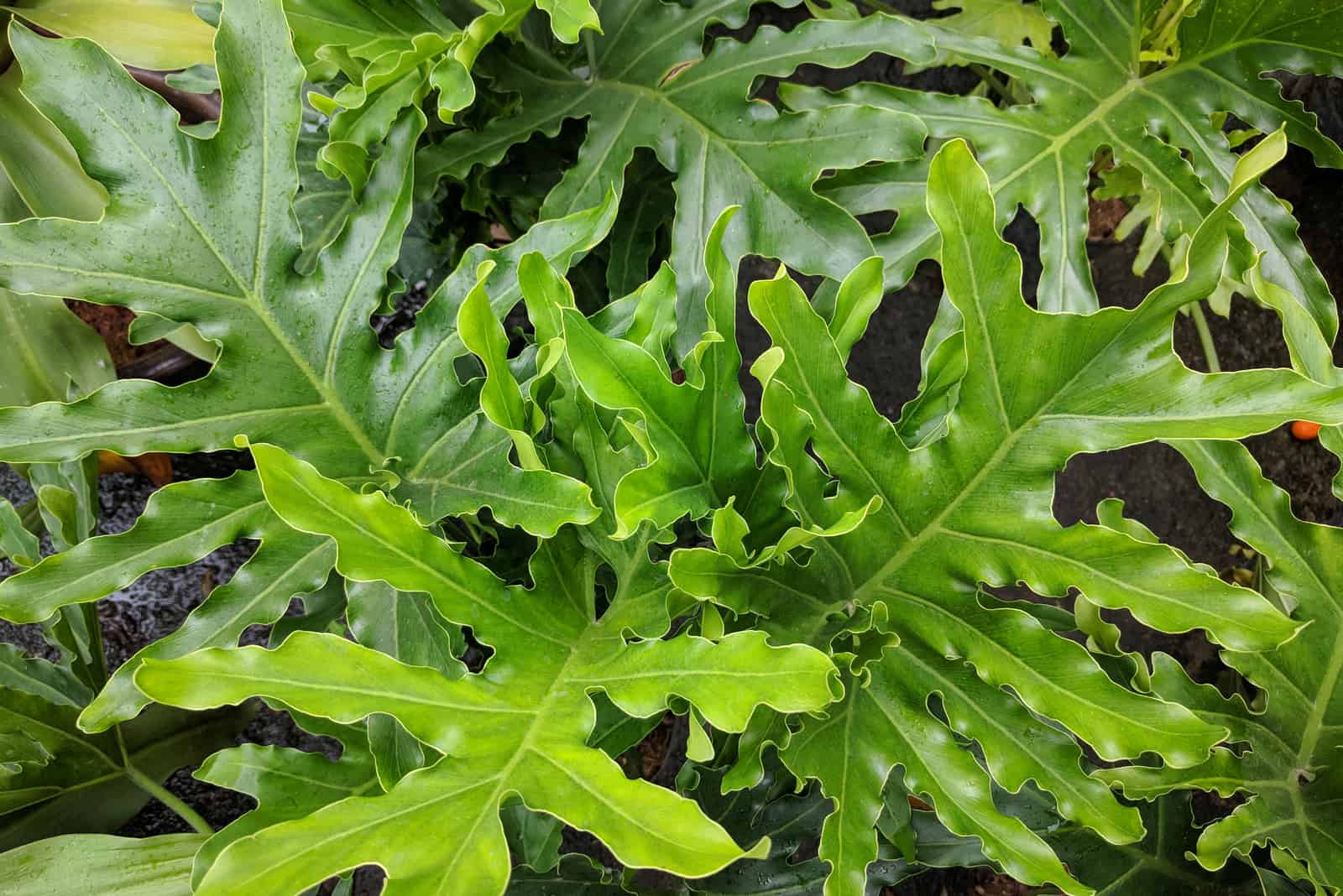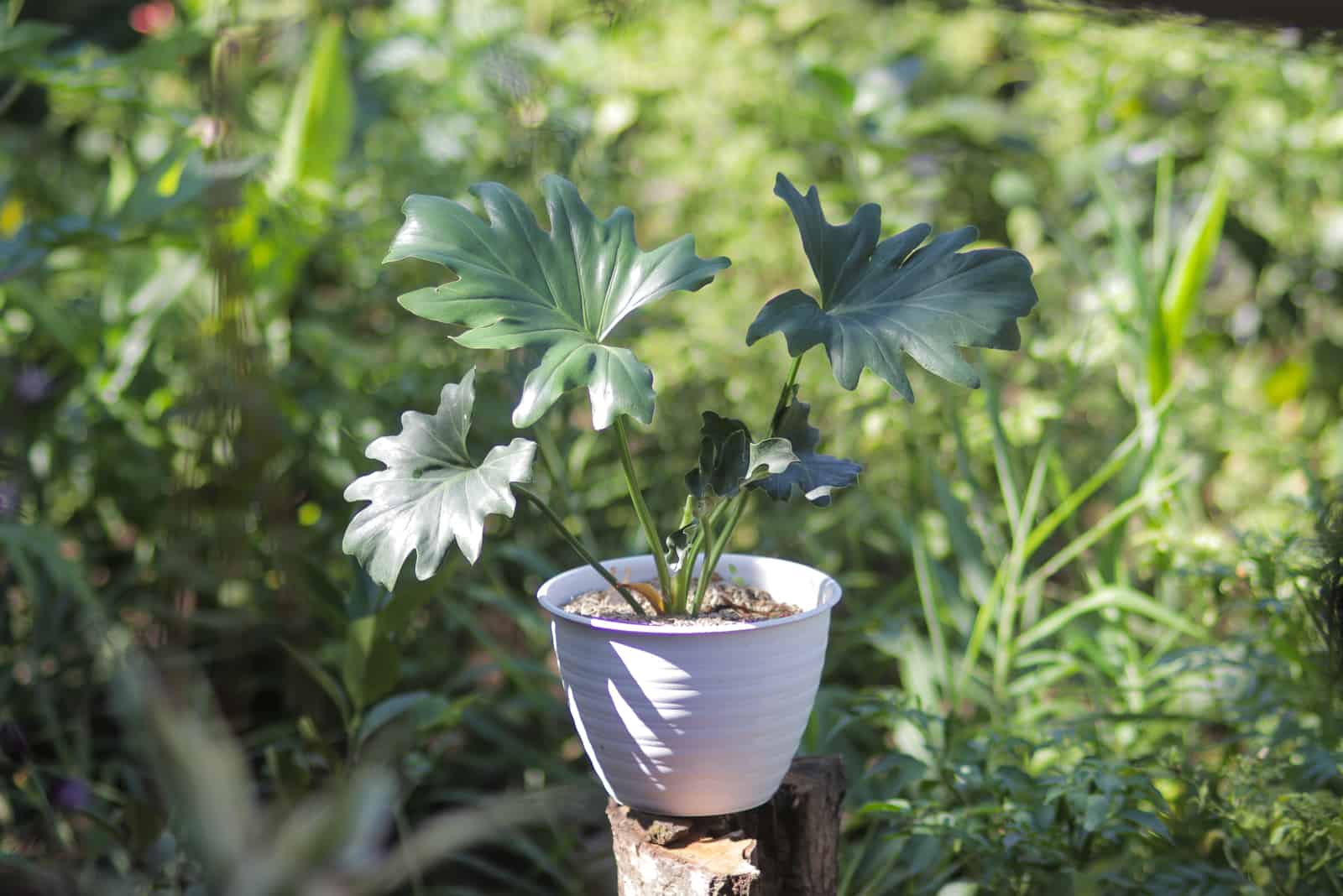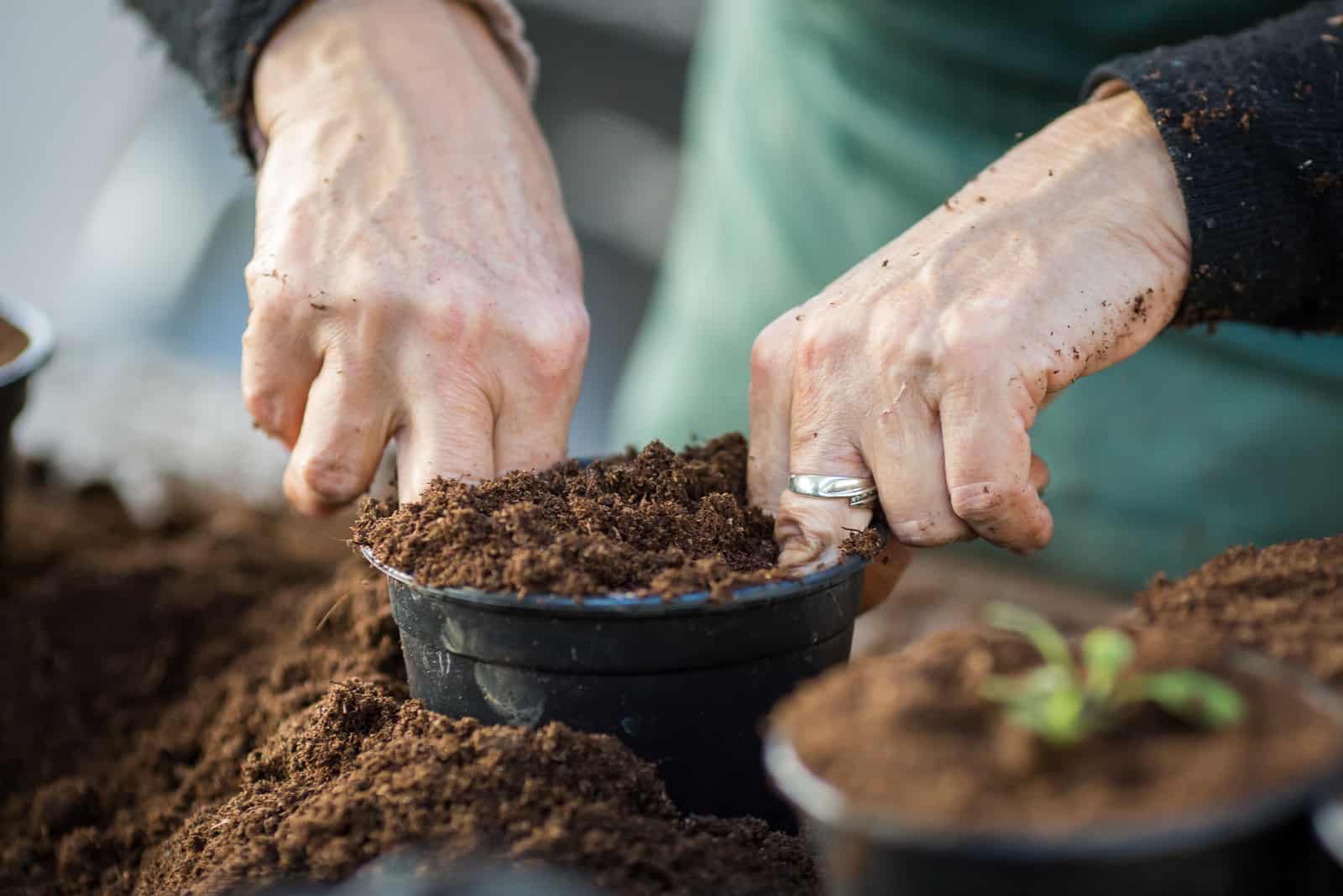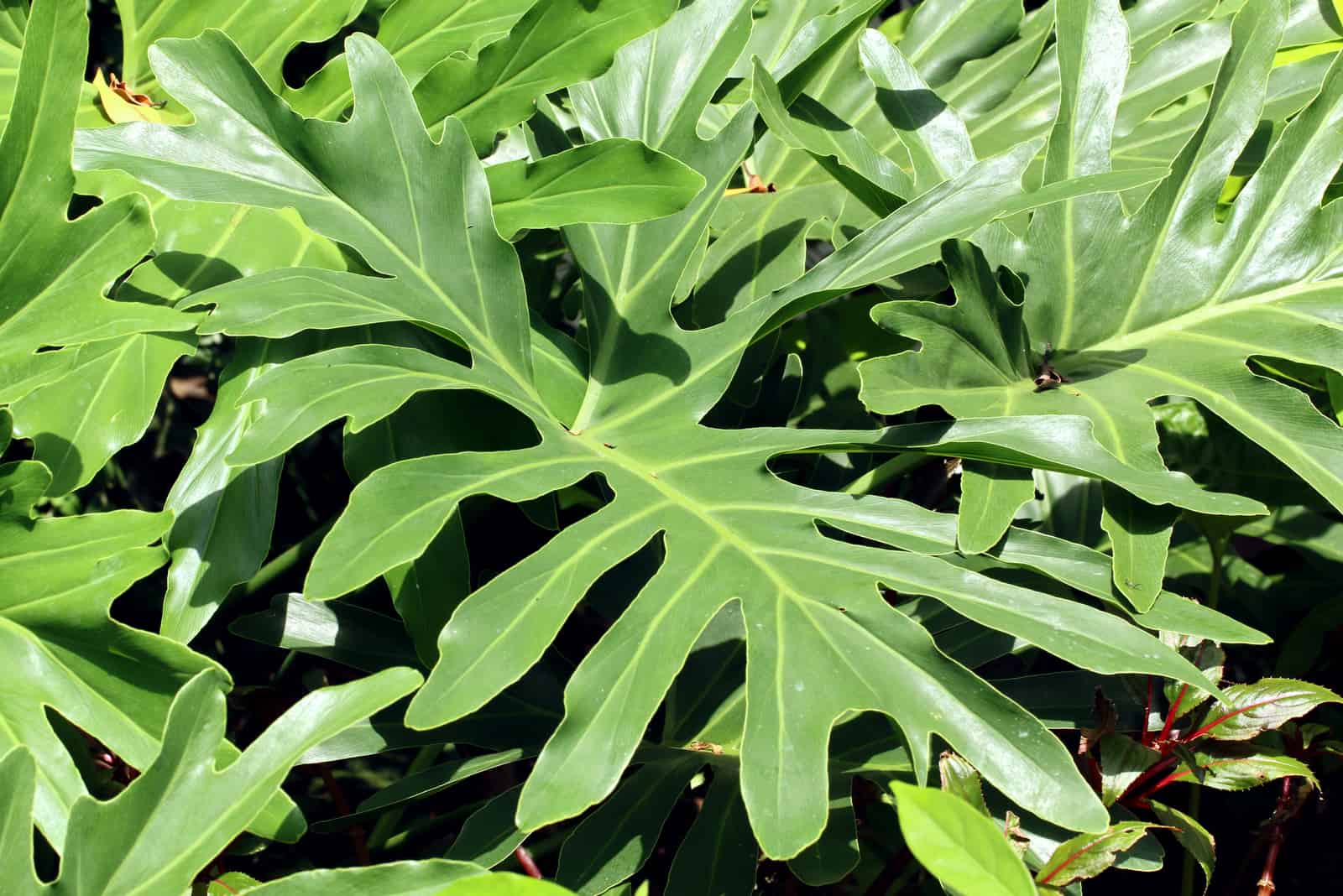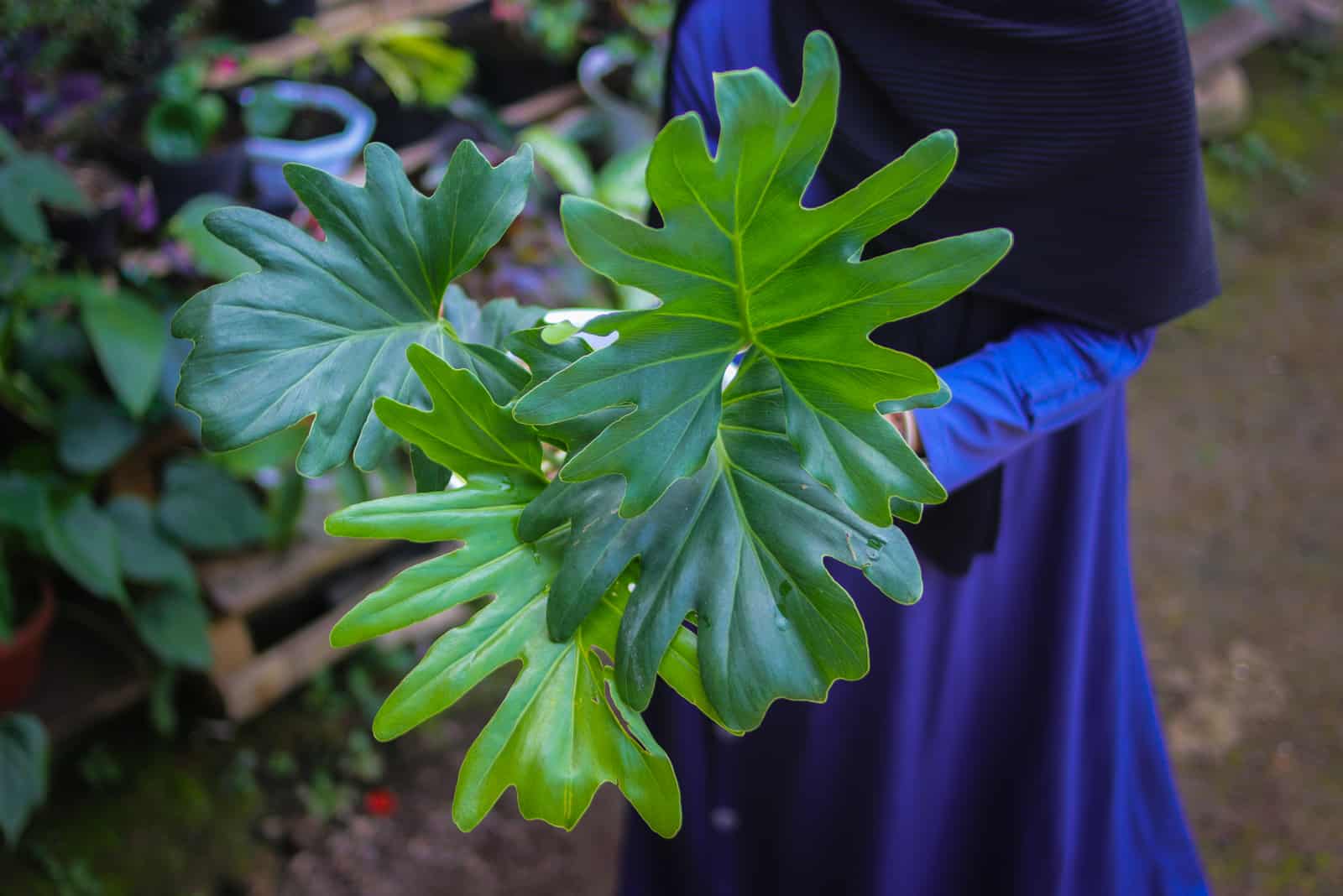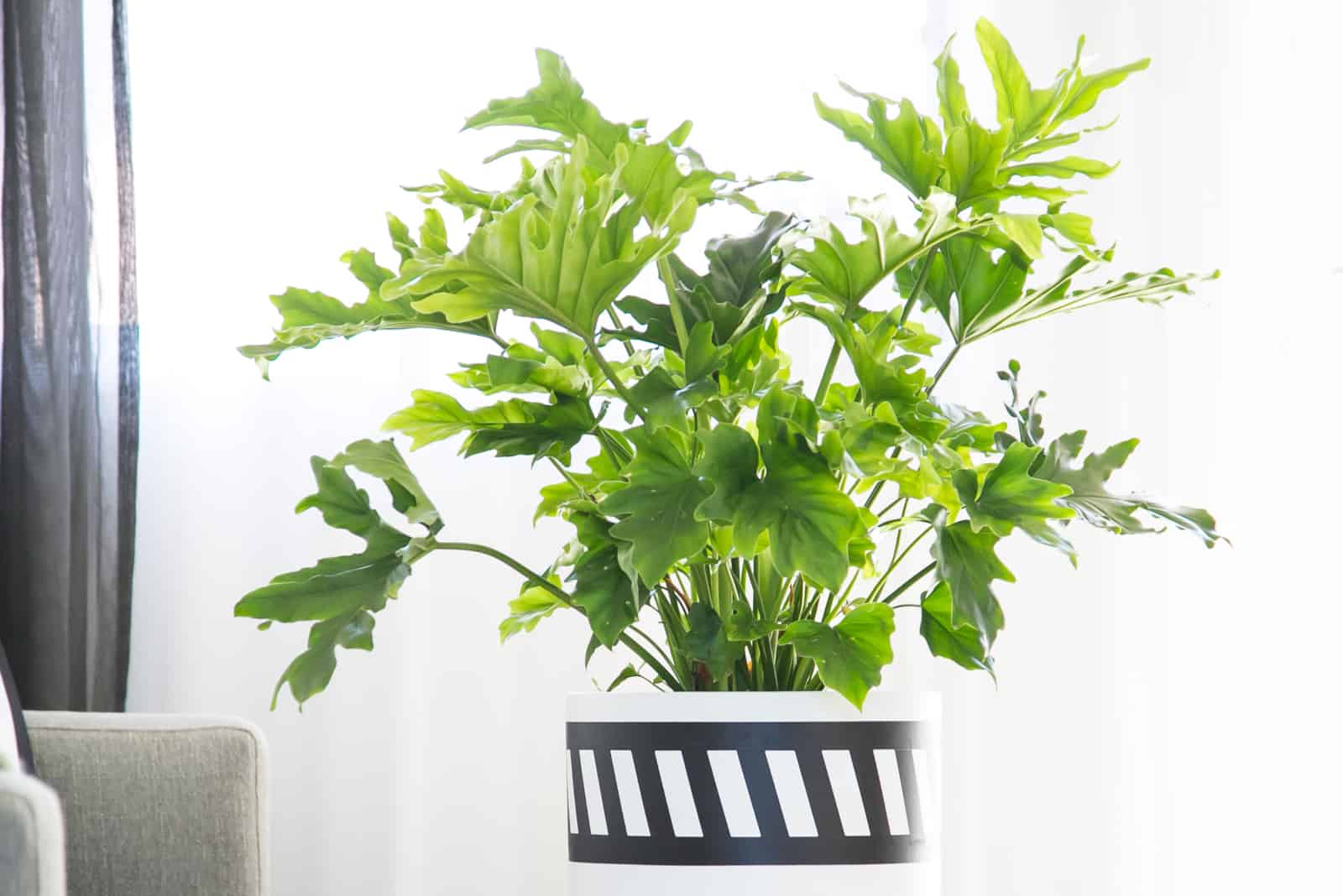Every gardener knows that philodendrons are a must-have when it comes to home decor. They’re low maintenance and rather stunning, so they kill two birds with one stone by enhancing the beauty of your home without having to put in any extra effort.
The Philodendron Lickety Split gets its name from the looks of its split leaves. It is very easy to fall in love with this plant because of the ambience this philodendron will provide to your home.
Don’t take my word for it, look for yourself and decide whether you’d like one of your own!
General information:
| Scientific name: | Philodendron Selloum |
| Native habitat: | South America |
| Type: | perennial |
| Size: | 2-3 feet (60-90 cm) tall and wide |
| Growth rate: | slow |
| Hardiness zone: | 9-11 |
| Toxicity: | toxic to human and pets |
Don’t let the toxicity put you off buying this amazing philodendron. Just keep it up high, wear gloves when handling it, and sterilize your gardening tools, and you will forget its toxic in no time.
Philodendron Lickety Split Care
The Lickety split philodendron is quite an easy to maintain houseplant. Give it some water and let light shine on it throughout the day and your work is done.
Okay, this might be a bit of an exaggeration, but I promise you they are so easy to maintain that it won’t take you more than five minutes a week to give this plant all it needs.
This makes it the perfect plant for people with busy lives, or short memories!
Light
The best way to help your philodendron grow as fast as it can is by giving it the light conditions it requires, and the light requirements for this indoor plant are quite easy to remember.
Keeping your philodendron lickety split in a bright indirect light will definitely help it grow big and strong.
This makes it perfect for indoor places as it won’t suffer any damage if you keep it in a medium to low light.
The same cannot be said for exposing your lickety split philodendron to direct sunlight. This will burn its leaves and cause them to change in color from mesmerizing green to blah-blah brown.
Where To Put Your Philodendron
The good thing is you can keep it in indirect sunlight, perhaps in an east or north-facing window. If you really, and I mean really like the look of this philodendron on the south side of your house, you could always keep it there, just be sure to move it away from the south-facing windows because too much bright light or direct sun can cause damage to this charming plant.
The last thing you need to pay attention to is rotating your philodendron every once in a while because they like growing towards the sun, just like sunflowers.
Once you learn what the lickety split likes, it’s a piece of cake to take care of.
Water and Humidity
This might come as a shock, but this tropical plant actually prefers drier soil conditions, so watering it all the time is definitely not a good idea.
Drowning your plant in water may lead to root rot, so overwatering a philodendron lickety split is a huge no!
However, just like overwatering can kill this philodendron, as can underwatering. However, it is quite difficult to underwater this plant as it can survive long periods of time, up to several weeks, without water.
You will want to make sure that the soil is dry before its next watering.
Also, the color of its leaves can help you tell whether it’s thirsty or if you need to calm down a bit with the watering. It’s easy: yellow leaves mean it’s had too much water, and brown means it hasn’t had enough.
During the growing season (in summer) you will want to water your lickety split regularly, but you must never forget how important it is to not overwater it!
Humidity Requirements
Just like any other tropical plant, the philodendron lickety split loves high humidity environments. However, the medium humidity of every-day homes should also suffice.
If the area you live in has drier climate conditions, it wouldn’t be a bad idea to spray the leaves a bit. Don’t spray it too much, though, because this can end up doing more harm than good, and may lead to fungal infections. So always give your philodendron some time to dry after spraying.
You can also invest in a humidifier that will keep your plant happy.
Temperature
Tropical plants like the lickety split adore warm temperatures. The perfect temperature would be somewhere between 65 and 80 °F (18-26°C), and no lower than 60°F.
Extremes, either hot or cold, can kill the plant in the long run. It also requires consistent temperatures, meaning that temperature swings and drafts should be avoided at all costs.
It prefers hardiness zone 9-11, so if you live in an area like this you can even keep it outside and it will be perfectly fine.
Soil And Fertilization
The soil requirements are quite easy to remember: start with a well-draining soil and then go from there.
Too much moisture in the soil can lead to root rot, which may kill your plant. If you hate waiting at the checkout to pay for succulent potting mix, you can always add perlite or sand to your preferred potting soil to prevent water-clogging.
Fertilizer
It is very important to understand that you shouldn’t fertilize your plant in fall and winter when the plant is dormant. Fertilization should only be done in spring or summer during the growing season.
Another thing you should keep in mind is that water-soluble fertilizer works best with the philodendron lickety split. This will prevent fertilizer burn.
Fertilizing your plant once a month shouldn’t be an issue. However, if you notice that your philodendron is an exceptionally fast grower, either because of sunlight or other conditions, you can fertilize it twice a month for the best results.
Propagation
The easiest way to propagate the philodendron lickety split (and probably any other philodendron, for that matter) is by stem cuttings. The best time to propagate this great plant is during its growing seasons, preferably in spring.
The process is very simple:
•Make a cutting of at least 4 inches (10 cm) that doesn’t have any foliage near its end part. Towards the top is fine and it’s also preferable to have 2-3 leaves.
• Fill the pot with moist, well-draining soil (but not too moist). You can choose whatever pot size you like, but we prefer 6×6.
• Plant the stem cutting in the soil, and provide the best plant care you can: a warm room, mild humidity, and a lot of bright, indirect sunlight.
• In 3-4 weeks time, the root system should be developed, and you will have a new plant ready to live on the coffee table.
The faster way to propagate by stem cuttings is by putting the cutting in a vase filled with water. In this way, the root system develops within 2 weeks, and your plant is ready for repotting that much sooner.
Repotting
The Philodendron lickety split is not a fast grower, and it can be repotted either once a year or even every two years, depending on the conditions.
The best way to see whether your philodendron needs repotting is by observing it: if you see roots coming out of the pot, it’s time you repot it.
Ideally, you would want to repot it during the growing season in spring, and move it to a larger pot, around 4 inches (10 cm) larger.
You should not put it in an enormous pot as this may lead to water-clogging.
Pruning
When you see dead or old leaves, you may try pruning. All you need is a pair of gloves and sterilized sheers and you’re good to go.
Pruning is also often done if either you want to shape your philodendron or you want it to be smaller to fit a certain space.
Whatever the reason, always be careful because the lickety split is toxic. It will not kill you, but it’s better to be safe than sorry.
Cleaning
This philodendron has amazing leaves, which will have to be cleaned from time to time. Removing dust with a damp cloth is simple and effective.
The frequency of cleaning depends on where you put your philodendron: if it’s in a dusty area, you will have to wipe it more frequently.
Always be sure to dry the leaves afterwards so they don’t wither and die.
More About The Philodendron Lickety Split
The Philodendron lickety split is an amazing plant, and there is so much to learn about it!
It is a relatively new philodendron hybrid, so there is always something new to discover about taking care of it; also it will make a great company to your philodendron Deja Vu.
Foliage
The most amazing thing about any philodendron plant is its leaves. These shiny, deep splits of dark green may be precisely what your home needs.
The leaves contain calcium oxalate, however, which may cause breathing difficulties and skin irritation. But if you wear protective equipment, there is no need to worry.
The leaves are huge, and every new leaf that grows is different from the previous one.
You’ll have to think about where exactly you want to place it, either near your monstera or houseleek should do nicely!
Common Pests And Diseases
Some common pests that attack the lickety split are mealybugs, aphids, and scale. But don’t be afraid if you find these little guys living on top of your philodendron, they’re easy enough to get rid of.
First, separate the infected plant from the others to stop the insects from spreading. Then use neem oil or any other mild insecticidal soap, and the plant should be as good as new.
Rubbing alcohol and even dish soap are not recommended because they can burn the leaves.
The Philodendron lickety split is fairly resistant to disease. Most of them are caused by overwatering and spraying too much water on top of the leaves.
Avoid too much moisture and you will avoid root rot and other fungal infections.
Q & A
There are still many unanswered questions regarding the philodendron lickety split, so let’s look at some of the most common ones.
What are the benefits of the Philodendron Lickety Split?
The most amazing thing about the philodendron lickety split is that it purifies air.
The leaves of the lickety split philodendron are toxic to humans and pets, but when you’re weighing up the pros and cons, you also need to take into consideration that it’s air purifying.
You can always put it a bit higher up to stay safe and also enjoy the freshly cleaned air.
What is the origin of the name “Lickety Split”?
The Lickety Split got its name based on word play.
“Lickety Split” means very quickly, and this philodendron probably got its name because of its fast growing, split leaves.
Philodendron Lickety Split vs Hope
The Philodendron lickety split has deep split leaves that look like fingers. They are glossy and colored in dark green.
The hope philodendron, on the other hand, is a smaller hybrid version of the Philodendron Selloum. It also has deeply-split leaves, but their edges are wavy. The hope has a moderate growth rate and doesn’t like to be pruned unless there is a dire need, like if you need to get rid of dead leaves.
If you prune your hope, you will only ruin its good looks.
To Wrap Up
Sadly, we have come to the end of our time together. I hope you learned how easy it is to take care of a philodendron lickety split, though!
All it requires is a little bit of sunlight and water and pruning from time to time, and it’s all set. You can decorate your home or office and create the perfect atmosphere for dinners with your friends to make everyone a bit green!
Until next time!
Like this post? Share or pin it for later!

